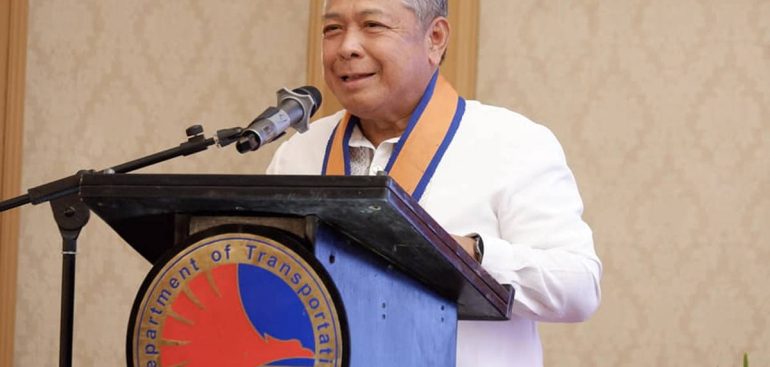By Genivi Verdejo
January 23, 2023
Retrieved from: https://www.manilatimes.net/2023/01/23/supplements/dotr-invests-in-high-tech-infrastructure-for-greater-accessibility/1875392/amp
The Department of Transportation (DoTr) is building more infrastructure projects that include flagship projects, aimed at making the country a regional hub.
Transportation Secretary Jaime Bautista leads the DOTr in celebrating its 124th anniversary with excitement on the projects that will modernize the country’s transport system under President Ferdinand Marcos Jr’s Build, Better, More policy. Despite the challenges, Bautista has committed to modernizing the four sectors of travel — land, sea, air and rail.
Legacy subway
The Metro Manila Subway Project (MMSP), dubbed as the Philippines’ “Crown Jewel” of mass transit system was planned 50 years ago in 1973.
“The start of tunneling work signifies the point of no return. We are going full speed ahead to complete the country’s first subway,” Secretary Bautista said.
President Ferdinand Marcos Jr. led the launching of the Tunnel Boring Machine (TBM) in Valenzuela City on Jan. 9, 2023. His father, former President Ferdinand Marcos Sr., conceptualized this project in the 1970s.
Marcos Jr. sees “better days ahead” in the country’s public transportation system as he vowed to sustain the implementation of big-ticket infrastructure projects which are vital to economic development and job generation.
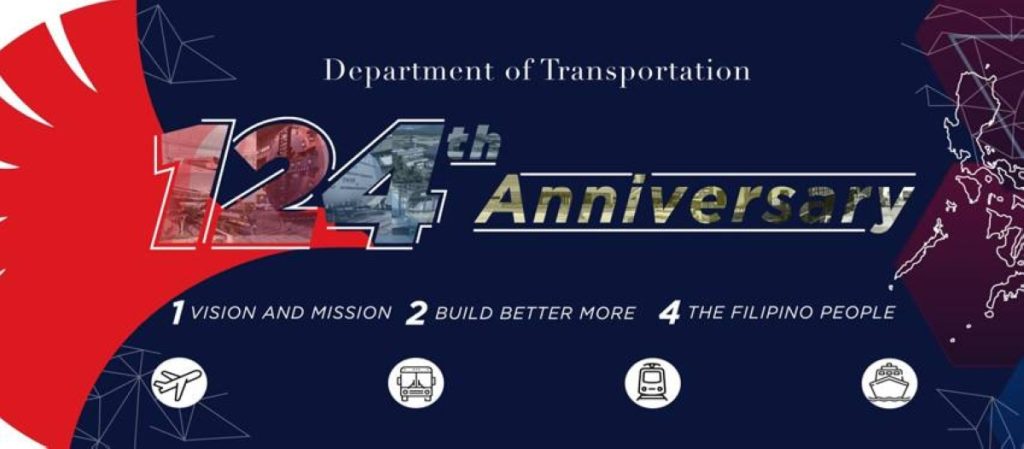
“We will continue to invest and improve on our transportation systems as well as pursue more projects in the years to come so that Filipinos can gain greater access to places of work, commerce, recreation and other vital areas,” Marcos said.
“Having an effective and efficient transportation system will have multiplier effects on employment, the economy, and our society. It will also bring comfort, convenience, and an easier life for all,” he added.
He expressed his gratitude to the government of Japan and the Japan International Cooperation Agency (JICA) for being the Philippines’ active partners in the fulfillment of its infrastructure programs.
Marcos said, the tunnel boring machine highlights Japan’s expertise in technology and trailblazing contributions to the modern world. He is confident that “they will help shape our railway infrastructure and keep them at par with the highest international standards.”
He also acknowledged the joint venture of Filipino and Japanese companies for working with the Philippine government on the MMSP’s Contract Package 101.
According to Matsuda Kenichi, the Minister and Deputy Chief of Mission of the Embassy of Japan in the Philippines, the plan was first initiated during the time of the late President Marcos Sr. Decades later, it can be considered a legacy that is now in the hands of President Marcos Jr. to fulfill.
“This marks the launch as a “new dawn for the Philippines’ transportation story” that is now “on the horizon,” Kenichi said.
He added that the government of Japan will continue to cooperate in this flagship project in a full-speed ahead manner until such time that Filipinos can finally enjoy the convenience of a subway.
The President congratulated and thanked the DoTr, its private partners and those who toiled to ensure the realization of the first subway system project in the country.
The subway will cut across eight cities that will stretch from Valenzuela City to FTI-Bicutan in Parañaque City with a spur line to NAIA Terminal 3 in Pasay City. With a total of 33-kilometer route length and 17 stations, the country’s first underground railway system aims to cut travel time between Quezon City and Ninoy Aquino International Airport (NAIA) in Pasay City from the present one hour and 10 minutes to just 35 minutes. Once operational, the railway system can serve up to 370,000 passengers daily.
The MMSP’s Contract Package 101 (CP101) is part of the seven civil work contracts of the project and involves the construction of three underground stations in Quezon City and an additional semi-underground station in the northern-most part of the Valenzuela City depot.
Six units of TBM will be utilized for CP101 to complete the excavation for the tunnels and will use a top-down construction method for the construction of the stations.
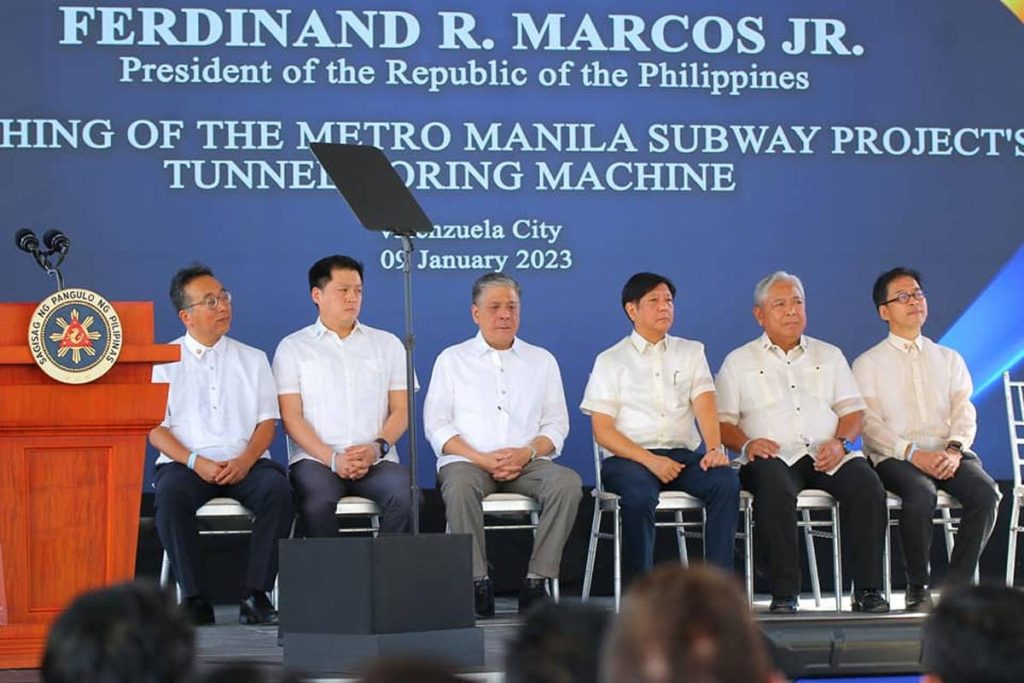
Around 1,200,000 cubic meters of soil using cut-cover and the TBMs are to be excavated for the partial operability (PO) section of the project or an equivalent of 500 Olympic size swimming pools. For the tunnels alone, the excavation will be around 711,000 cubic meters or the equivalent of 285 Olympic size swimming pools.
The entire alignment will have a total excavated soil of about 7,419,940 cubic meters or the equivalent of 2,500 Olympic size swimming pools.
Based on the project overview, Construction Project (CP) 101 is located at the north end, with the package consisting of a depot and three stations: Quirino Highway station, Tandang Sora station, and North Avenue station with six tunnels between them.
Additionally, East Valenzuela station will be constructed in the depot area located in Mindanao Avenue with a total range of 6.9 kilometers. Pre-construction work is ongoing both in Quirino Highway and Tandang Sora stations.
At the North Avenue station, the main work started in August 2021, and station construction is now ongoing. Works in the launching shaft and Philippine Railway Institute (PRI) started in 2021.
Regarding tunnel works, the average tunnel depth is 18.5 meters, with a total tunnel length of 9.26 km for the three stations.
Tunnel boring productivity is 180 meters per month, or almost 12 months for each section, including related works.
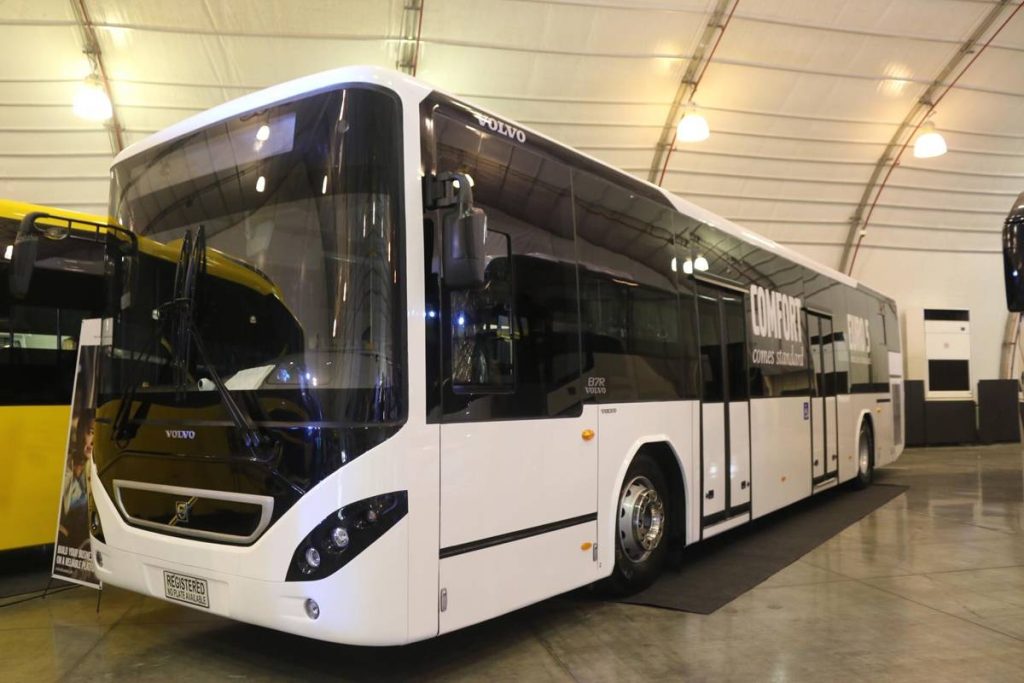
For TBM No. 1 and 2, it drives from the depot to Quirino Highway station. After the launch, it will drive to the depot area for several months, run through residential areas, and arrive at Quirino Highway Station in December 2023.
For TBM No. 3, it will be launched from North Avenue Station in July 2023 and will arrive at Tandang Sora Station in July 2024. After driving through the residential area, the TBM will drive under Mindanao Avenue.
Finally, TBM Nos. 5 and 6 will run from Tandang Sora Station in August 2024 and will arrive at Quirino Highway station in August 2025.
“I hope that both you and the DoTr will not waver on your commitments to finish the contract package by the end of 2027 to ensure that Filipinos will get to enjoy the project at the soonest possible time,” Marcos said.
And because such big-ticket projects take years to complete, President Marcos asked for the public’s continued patience, trust, and support for the government.
“This subway will help ease congestion and carbon dioxide emission in Metro Manila and thereby benefit the well-being of more commuters. Enhanced productivity for all is also seen to result from improved reliability and punctuality embedded in the subway technologies,” Kenichi said.
Meanwhile, the DoTr made improvements in the Philippine railway system such as signaling upgrades in the Light Railway Transit (LRT)-1 and the light railway vehicles (LRVs) overhaul in the Mass Railway Transit (MRT)-3.
The Philippine National Railway (PNR) also opened an additional route from Calamba, Laguna to Lucena City in Quezon province under the North-South Commuter Rail Project.
Bautista stressed the value of interconnectivity of the country’s various transport infrastructures and the urgent need to provide a railway station at the NAIA.
Privatizing NAIA
DoTr is fast-tracking the privatization of the NAIA, the major airport in Metro Manila. “It has breached its rated capacity, it’s high time to modernize and expand the NAIA,” he said.
NAIA can only handle 40 to 44 movements of aircraft an hour. With privatization, it can increase its aircraft capacity to 50 or even 55 aircraft movements.
“Admittedly, we have two airports (NAIA and Clark) that are across each other. We can only handle 40 to 44 movements per hour, but with the new technology, we should be able to increase this to 50, or even 55,” he said.
Bautista said with the amendment to the implementing rules and regulations (IRR) of the Public-Private Partnership (PPP) scheme, any dispute or issue between the government and private sector will go through arbitration. Such provision is internationally adopted.
“We will fast-track the conditions of the terms of reference. There was an amendment to the IRR of the PPP Law. It will allow arbitration, in case there’s a dispute between the PH government and the private sector,” he said.
DoTr is fast-tracking the air traffic management systems upgrade, following the technical glitch on New Year’s Day.
NAIA has normalized its operations following the January 1 glitch. Marcos conducted an ocular inspection at the NAIA Terminal 3 and held a briefing from airport authorities regarding the technical aspects of the problem encountered by NAIA.
Marcos also apologized to those affected by the disruption, saying the important thing is that they were given support during their ordeal.
The January 1 air traffic system failure affected over 56,000 passengers and more than 300 inbound and outbound flights.
He commended the cabinet secretaries, airport authorities, and all those involved in returning the system to normal for doing a good job despite the severity of the problem.
“Make sure you fast-track whatever negotiations with the equipment suppliers who can help us with the upgrades for the software and the hardware of our equipment,” Marcos said.
Bulacan airport as regional hub
The Marcos administration is making strides to deliver an international, regional aviation hub, with the construction of the New Manila (Bulacan) International Airport.
The DoTr is pursuing the implementation of Phase 1 of the New Manila (Bulacan) International Airport Project, which is targeted to be operational in 2027.
The DoTr is collaborating with the Department of Public Works and Highways (DPWH) and the concessionaire to implement a flood mitigation plan for the Bulacan airport project.
The DoTr also held advanced site acquisition for the airports in Laoag City in Ilocos Norte, Marinduque, Kalibo and Zamboanga.
Port upgrades
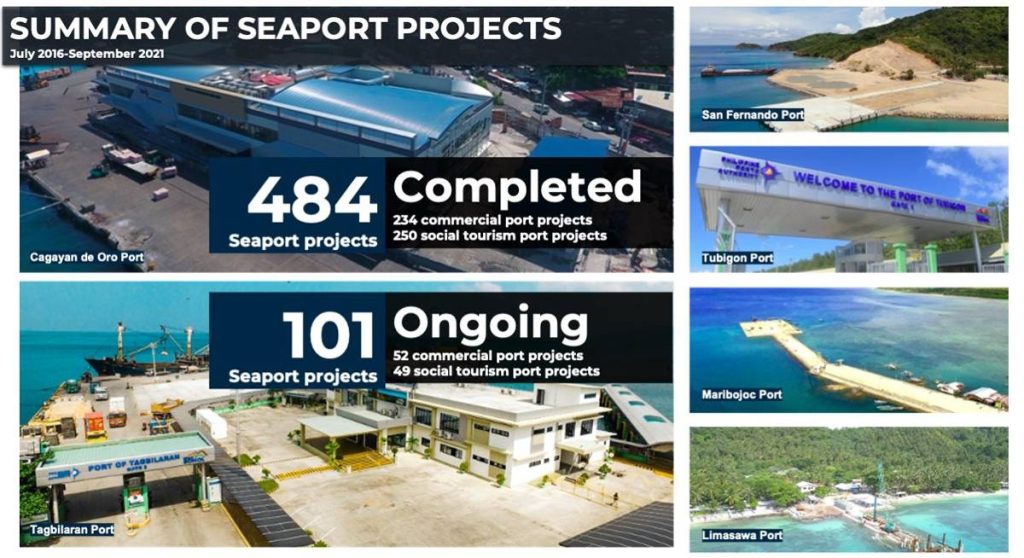
Philippine Ports Authority (PPA), a government-owned and controlled corporation under the DoTr is bidding out various port projects such as the construction of the port operational area of Port of Lawigan, in Bislig, Surigao del Sur, and the construction of phase 1 of Port of Liloan, Southern Leyte, San Ricardo port rehabilitation. PPA will have dredging projects in Pulupandan and Himamaylan ports in Negros Occidental, Tacloban port in Tacloban City, Leyte; Iloilo clustered project, which includes Iloilo river, international container port complex (ICPC), Fort San Pedro, Dumangas and Jordan.
The P353 million passenger terminal building of Port of Calapan will open in March 2023. The modern PTB will provide quality service and world-class facilities to passengers. The terminal can accommodate a total of 3,500 passengers at any given time.
Other port projects include the construction of new Green, Resilient, Advanced, and Digitally-Equipped (GRADE) ports and the expansion, repair, and maintenance of existing ports in the country.
DoTr has secured funding for port projects through the Special Allotment Release Order (SARO) from the Department of Budget and Management (DBM). It has secured funds for four out of seven projects under the 2021 national budget and 15 out of 48 projects under the 2022 national spending program.
To reduce logistic costs, DoTr is implementing a three-year development plan to improve food supply and logistics.
Addressing maritime issues
President Marcos Jr. ordered the Maritime Industry Authority, an agency under the DoTr to address the issues of ship boarding requirements for maritime students and upgrading school competencies and training programs to align them with international standards.
Atty. Cheloy Velicaria-Garafil, undersecretary and officer-in-charge at the Office of the Press Secretary said, doing so would enable the country to maintain its status as the leading supplier of seafarers in the world.
Marcos wants the DoTr to craft a development plan for the maritime and aviation sectors to aid the country’s economic recovery and provide livelihood to Filipinos.
“President Marcos ordered the implementation of the maritime industry development plan and upgrading of ports to accommodate cruise ships to boost the tourism industry,” Garafil said.
“He ordered Marina to address the problems on training schools that are not compliant with the educational quality requirements and standards based on international guidelines,” Garafil added.
Modernizing PCG
The Philippine Coast Guard (PCG) is continuing the comprehensive modernization of its assets and manpower.
“We will continue to help the Coast Guard in pursuing their comprehensive modernization program,” Bautista said.
He envisions world-class PCG men and women performing like Coast Guards of developed countries.
“Given the inherently international nature of shipping and maritime transportation, attendance in world-class educational programs from these prestigious institutions should not be taken for granted,” Bautista said.
The personnel complement of the Coast Guard has grown exponentially from only around 7,000 several years ago to over 26,000 today.
Under Commandant Admiral Artemio Abu, the PCG plays a vital role in maritime safety and security. He called for diplomacy amid the challenges in the country’s sovereign waters.
He commended the PCG’s humanitarian efforts and marine environmental protection, including the prosecution of illegal poachers.
“Please continue taking care of our precious marine life,” he added.
Bautista said PCG plays a significant role in achieving the collective goal of providing accessible, affordable, comfortable, and safe transportation for Filipinos.
Meanwhile, the Marcos administration successfully carried out the Libreng Sakay Program through the LRT-2 EDSA Busway, reporting 1.6 million students enjoying free rides in LRT-2 and 52 million overall EDSA Busway ridership last year.
The DoTr also spearheaded the conduct of road repairs and installation of solar studs along the EDSA Busway, as well as bus timers in several bus stations. The busway also had three newly completed and inaugurated additional stations.
Serving the people
Bautista said at the onset of his appointment as Secretary of Transportation, he pledged to transform the Philippine transport system and elevate it to global standards.
“Focus on improving the travel experience of passengers by adopting four public service norms: safety, affordability, accessibility and efficiency. The status quo in the Philippine public transport system is simply unacceptable,” he told the DoTr personnel.
He said teamwork and communication among and between agencies are important. Through cooperation and collaboration, we can alleviate the daily ordeal of commuters.
“I hope I can transplant my private sector work ethic to my first government assignment by demanding professionalism, honesty and integrity from employees. Our job is beyond transporting people and goods from point A to point B. An efficient and effective transport system ultimately contributes to the country’s economic rebound,” he said.
He asked for the public’s support, as he vowed to listen to suggestions, even criticisms and to work together to find solutions to various transport concerns.
“This will be my biggest career challenge — to improve the lives of Filipinos through safe, comfortable, accessible and efficient travel,” he said.
Jaime Jimenez Bautista was the former president and chief operating officer of Philippine Airlines.
According to Wikipedia, Bautista is an independent director of Premium Leisure Corp. and Nickel Asia Corp. He was the former executive and director of MacroAsia Corp., Macroasia Airport Services Corp., Macroasia Properties Development Corp. and Eton Properties Philippines Inc. He was also the former treasurer of Tan Yan Kee Foundation, Inc. He served in various executive capacities in the Lucio Tan Group for 39 years, and for the last 24 years for Philippine Airlines and its subsidiaries.

